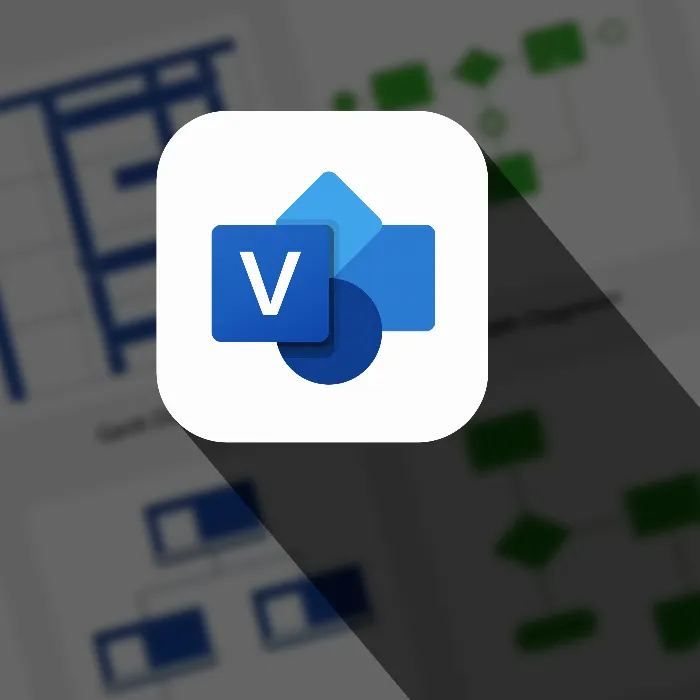Linking an Access database with Microsoft Visio opens up numerous possibilities for visualizing and analyzing data. This tutorial will show you step by step how to establish this connection and how to effectively use the data in Visio. Follow the instructions and utilize your Visio diagrams for creative and efficient data presentation.
Key Takeaways
- You can link an Access database with Visio to visually represent your data.
- It is important to set the correct data types in Access to avoid issues during import.
- The integration allows you to use shapes in Visio that are directly linked to the data from your Access database.
Step-by-Step Guide
1. Install Access on Your Computer
Before you can start connecting Access and Visio, make sure Microsoft Access is installed on your computer. Without this program, you will not be able to create the necessary databases.

2. Create a New Access Database
Launch Microsoft Access and create a new database. Right-click in the start menu and choose "New." Name the database "Database 1" and open it by double-clicking or pressing Enter.
3. Ignore Security Warnings
If Access displays a security warning, you can ignore it. Click "Enable Content" to make the full functionality of the application available.

4. Create Table in the Database
To organize the data, create a new table. Click on "Table" in the menu to generate a new table. Access will automatically create an ID column that acts as the primary key.
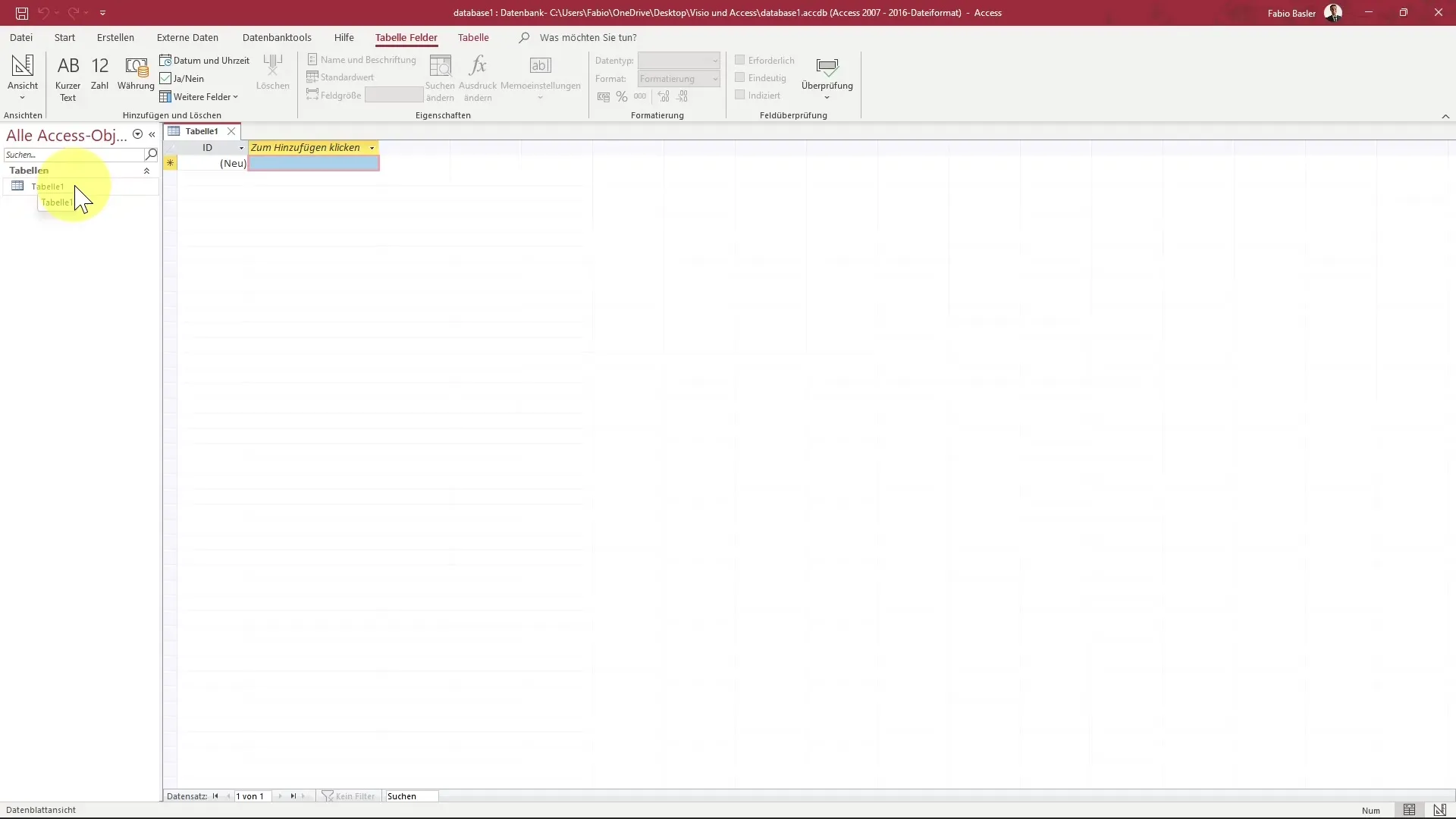
5. Add Columns for the Data
Now add a new column with a short text data type. For example, you can enter the products "Product A," "Product B," and "Product C" in the list. Remember to correctly set the data types for the respective columns. The revenue figures should be entered as numerical values.
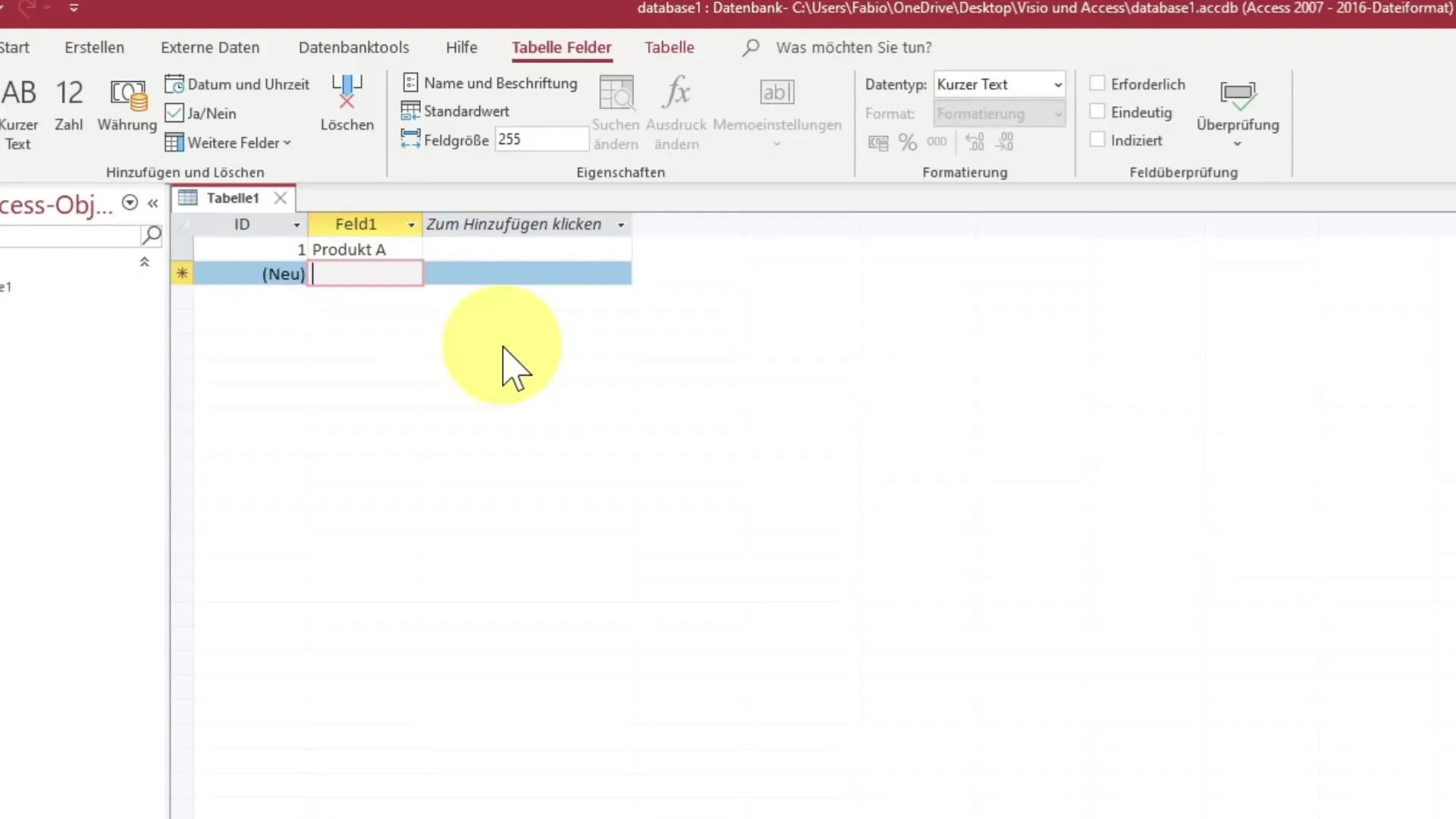
6. Enter Data into the Table
In the third column, enter the revenue values for the products. For example, you could enter "€4321 for Product A," "€3546 for Product B," and "€5312 for Product C." Ensure that the entries are numerical and correctly formatted to avoid issues during import.
7. Save the Table
After entering all the data, save the table. Either press "Ctrl + S" or click on the save icon. Choose "Save As" to ensure that your table has been successfully saved in the database.
8. Open Microsoft Visio
Close Microsoft Access and open Microsoft Visio. Create a new document by right-clicking and selecting "Microsoft Visio Drawing." Name the new document "Connect to Access".

9. Select Data in Visio
In Visio, under the "Data" menu, choose the "Custom Import" option to establish the connection with Access. This will take you to the data import dialog.
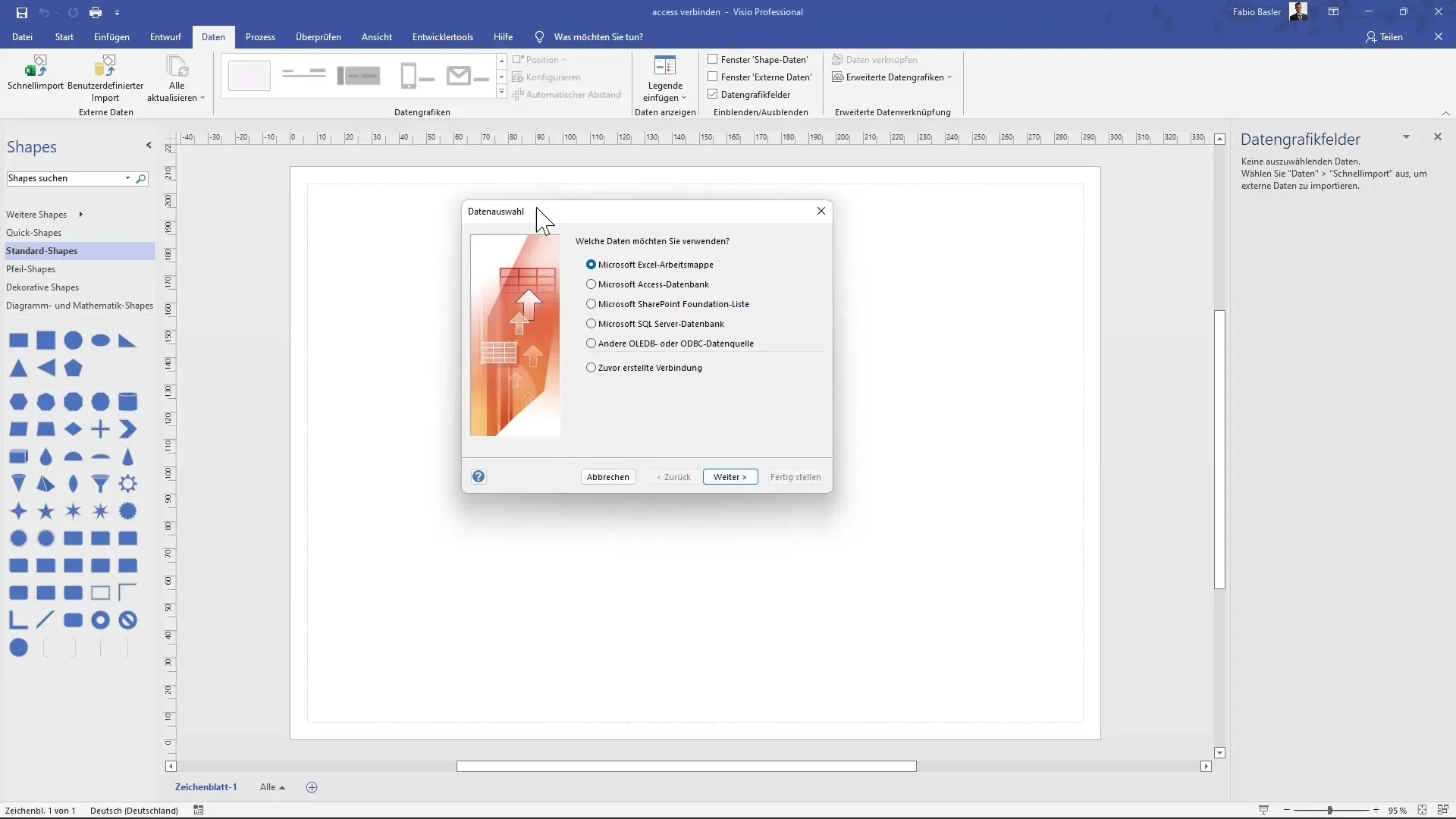
10. Select Access Database
In the import dialog, choose to connect an Access database. Click on "Browse" to open your previously created "Database 1."
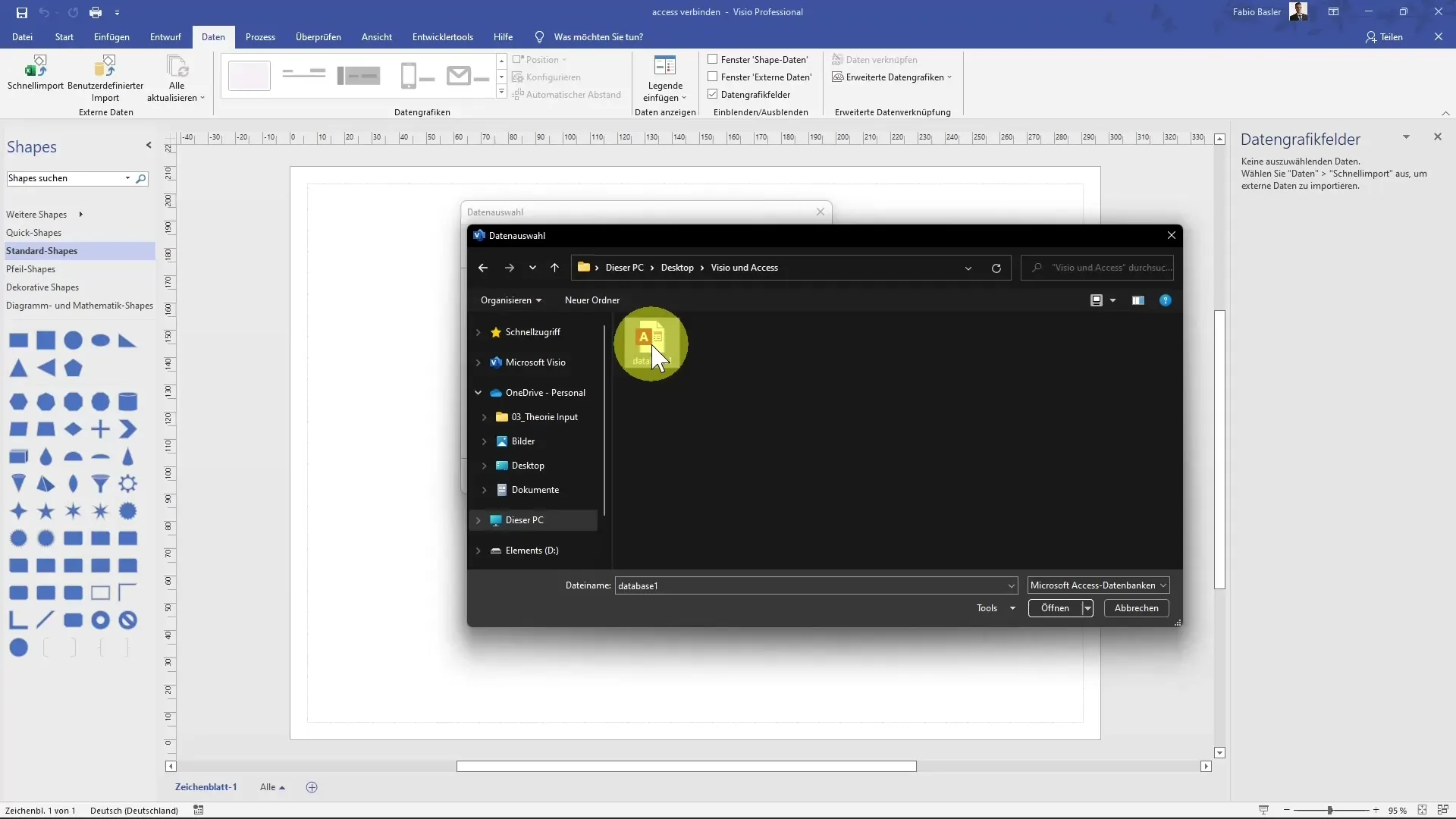
Selecting a Table in Access
Once the database is open, you will be asked which table you want to import. Select "Table 1" and click "Next". You can now select all columns that should be imported.
Completing the Import
Click on "Finish" to complete the import. You should now have established a connection between Visio and the Access database. Verify that the connection was successful by examining the displayed data profile.
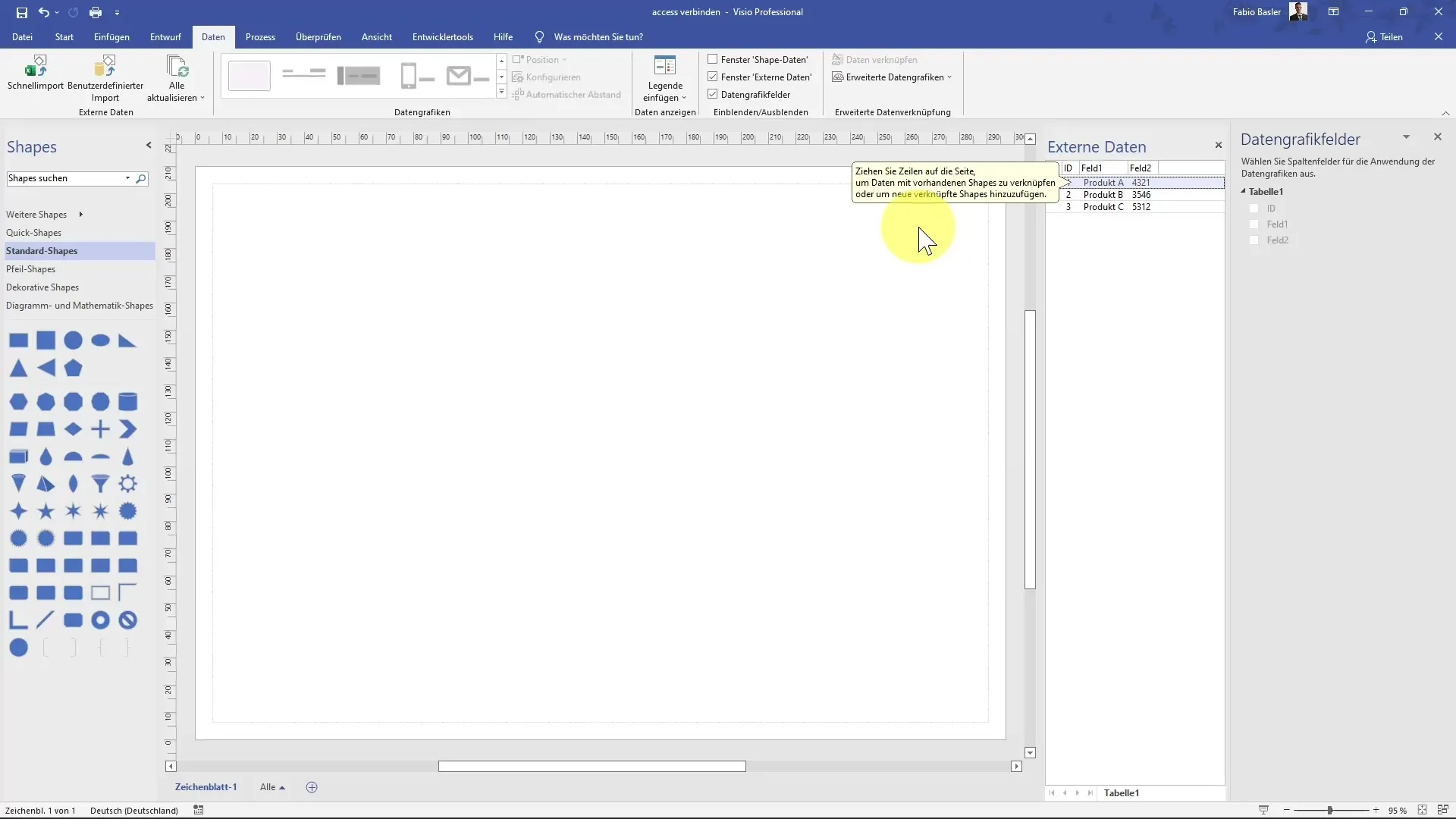
Using Shapes in Visio
Now you can insert shapes in Visio and link them with the imported data. Hold down the "Ctrl" key and add the desired shapes A, B, and C for the respective products.
Linking the Shapes with Data
To link the shapes with the access data, you can right-click on a selected shape and choose "Link with Selected Shape". Make sure to select the correct data source.
Challenges and Data Selection
With this method, you can integrate the data from Access directly into your Visio diagrams and automatically update them. You can also use different relational database systems as needed.
Summary
In this guide, you have learned how to create an Access database, enter data, save it, and establish a connection to Microsoft Visio. Through these steps, you can effectively visualize your data and achieve a clear, organized representation of your information in Visio.
Frequently Asked Questions
How do I install Microsoft Access?You can install Microsoft Access through the Microsoft 365 package or purchase it individually.
Can I connect other databases besides Access in Visio?Yes, Visio also supports connection to other relational database systems like SQL databases.
What data type should I choose for revenue values in Access?The revenue value should be declared as a numerical value to be able to perform proper calculations.
